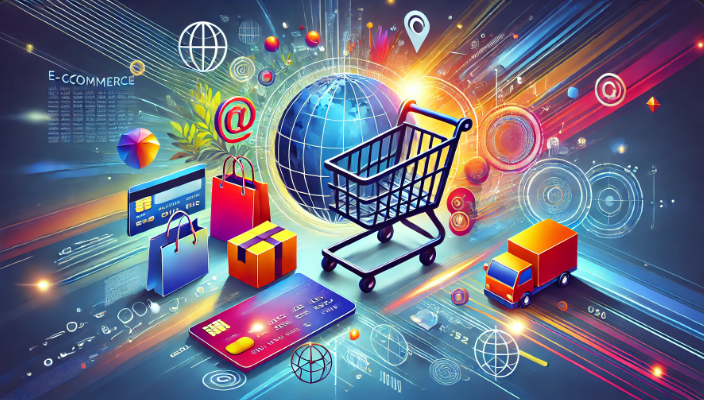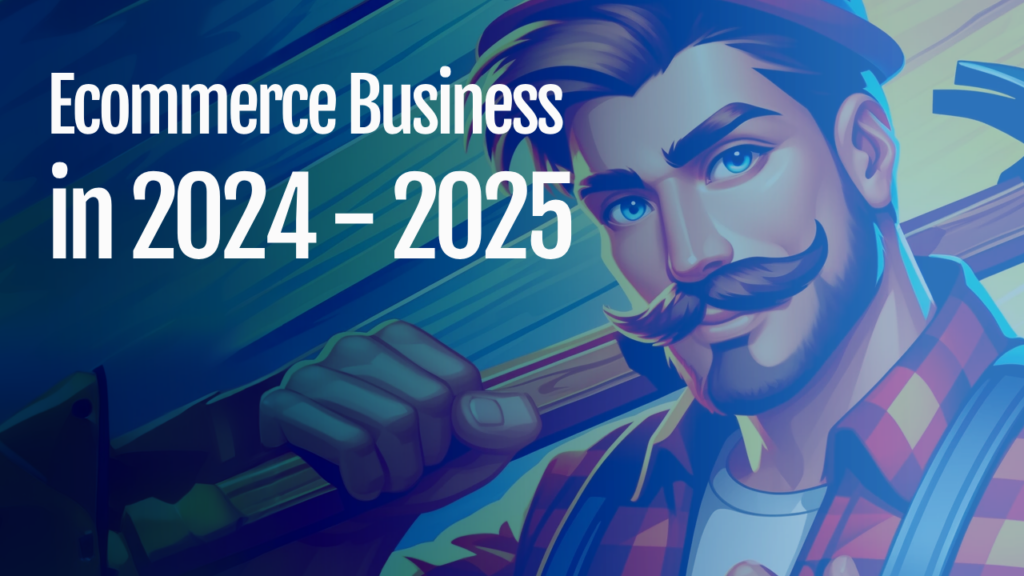So, you want to prepare yourself for a possible economic recession? Well, creating an ecommerce business is a savvy strategy to not only survive but thrive during challenging economic times. With the right approach, your online store could become a reliable income stream, even when traditional businesses struggle. In this article, we’ll dive into the essential steps on how to start an ecommerce business that’s not just resilient but recession-proof.
This article is part of our guide: 7 Key E-Commerce Trends in 2024
Why an Ecommerce Business is Your Best Bet
Let’s face it: the digital landscape has become the frontline for commerce. As brick-and-mortar stores face declining foot traffic, ecommerce continues to rise. Even during economic downturns, people will still need to shop. However, their shopping habits will shift—they’ll look for value, convenience, and reliability. If you can meet those needs, you’re already ahead of the game.
In 2024, building an ecommerce business isn’t just about selling products online; it’s about creating an experience, a brand, and a community. The good news? With platforms like Shopify, BigCommerce, and WooCommerce, the barriers to entry are lower than ever. You don’t need to be a tech wizard to set up shop, but you do need a solid plan. So, let’s get started.

How to Start an Ecommerce Business: Laying the Foundation
Before you rush into choosing a logo or setting up a website, let’s talk strategy. The foundation of a successful ecommerce business lies in the planning phase. Here’s a step-by-step breakdown:
1. Identify Your Niche
Your first step is to identify a niche. What do you want to sell? More importantly, what do people need? During a recession, consumers prioritize essential goods, affordable luxuries, and products that promise long-term value. Think about trends in health, home improvement, budget-friendly fashion, and sustainable living. Pick a niche that aligns with your interests but also has market demand.
2. Research Your Market
Once you’ve identified your niche, it’s time to dive deep into market research. Who are your competitors? What are their strengths and weaknesses? What can you offer that they can’t? Use tools like Google Trends, SEMrush, and even social media to gauge what’s popular. Pay attention to customer reviews to understand pain points you can address.
3. Choose the Right Ecommerce Platform
Now that you’ve got a clear vision, it’s time to choose your ecommerce platform. Shopify is a fantastic option for beginners and experienced entrepreneurs alike. It’s user-friendly, offers a wide range of customizable templates, and has a robust app ecosystem that can handle everything from email marketing to inventory management. Plus, Shopify’s customer support is top-notch, which is invaluable when you’re just starting out.
Other platforms like WooCommerce (for WordPress users) and BigCommerce also offer strong features. However, Shopify’s ease of use and scalability make it a strong contender for anyone looking to build a recession-proof business quickly.

Building Your Ecommerce Site
Once you’ve chosen your platform, it’s time to build your store. Here’s how to do it effectively:
1. Design with the User in Mind
Your website is the face of your business, so make it count. Choose a clean, responsive design that works well on both desktop and mobile. Use high-quality images, easy-to-read fonts, and intuitive navigation. Remember, if your site is slow or hard to navigate, potential customers will bounce—especially during a recession when every dollar counts.
2. Optimize for SEO
Search engine optimization (SEO) is crucial for driving organic traffic to your site. Start by incorporating your target keywords, like “how to start an ecommerce business,” into your product descriptions, meta tags, and blog posts. Don’t overdo it, though—Google rewards quality content over keyword stuffing.
3. Set Up Secure Payment Gateways
In an era where cybersecurity threats are rampant, trust is everything. Make sure your payment gateways are secure and that your site is SSL certified. Offering multiple payment options, like credit cards, PayPal, and even cryptocurrency, can increase your chances of conversion.
How to Start an Ecommerce Business: Marketing and Growth
Now that your store is up and running, it’s time to focus on marketing and growth. But wait, should you go all out on ads or focus on organic growth? The answer is both, but with a strategic approach.
1. Content is King
Blogging, video tutorials, and social media content are excellent ways to build brand awareness and drive traffic. Create valuable content that resonates with your audience. For instance, if your niche is sustainable living, write blog posts about eco-friendly practices, or create video tutorials on how to reduce waste at home.
2. Leverage Email Marketing
Don’t underestimate the power of email marketing. Collect emails from your visitors by offering something of value—a discount, a free eBook, or exclusive access to content. Use those emails to send out personalized offers and updates. During a recession, personalized communication can make all the difference in maintaining customer loyalty.
3. Invest in Paid Advertising
Paid ads on platforms like Google and Facebook can provide a quick boost in traffic. However, be strategic—use A/B testing to determine which ads perform best, and don’t blow your budget on a single campaign. Monitor your ad spend closely and adjust based on performance metrics.
Scaling and Sustaining Success
With your ecommerce store up and running, it’s time to focus on the next big challenge: scaling your business. The goal isn’t just to survive during a recession but to grow. Let’s explore some of the key strategies to help you scale your ecommerce business effectively in 2024.
1. Diversify Your Product Line
One way to ensure sustained growth is by diversifying your product line. Start by analyzing your best-selling products and consider introducing complementary items. For instance, if you’re selling eco-friendly cleaning products, consider adding reusable cleaning tools or sustainable storage options. Diversification can help you tap into new markets and reduce the risk of relying too heavily on a single product.
2. Enhance Customer Experience
During tough economic times, customer loyalty is more important than ever. A great customer experience can set you apart from the competition and encourage repeat business. Here are a few ways to enhance the customer experience:
- Offer Exceptional Customer Service: Be available through multiple channels—chat, email, phone—and respond promptly. Consider implementing a chatbot to handle common inquiries quickly.
- Implement a Loyalty Program: Reward your repeat customers with points, discounts, or exclusive access to new products. Loyalty programs can increase customer retention and boost your overall revenue.
- Streamline the Checkout Process: A complicated checkout process can lead to cart abandonment. Make sure your checkout is simple, quick, and mobile-friendly. Offering guest checkout options and multiple payment methods can also improve the experience.

How to Start an Ecommerce Business: Data-Driven Decisions
Data is your best friend when it comes to scaling your ecommerce business. Here’s how to leverage it effectively:
1. Monitor Analytics
Keep a close eye on your website’s analytics to understand how visitors are interacting with your site. Use tools like Google Analytics to track key metrics such as bounce rate, average session duration, and conversion rates. This data will help you identify what’s working and what needs improvement.
2. A/B Testing
A/B testing is a powerful tool to optimize various aspects of your ecommerce store, from your homepage to your email campaigns. Test different headlines, product descriptions, call-to-action buttons, and even color schemes to see what resonates most with your audience. Small changes can lead to significant improvements in conversion rates.
3. Personalization
In 2024, consumers expect personalized shopping experiences. Use data to segment your audience and tailor your marketing efforts accordingly. Personalized product recommendations, targeted email campaigns, and dynamic content can all contribute to a more engaging and effective customer journey.
How to Start an Ecommerce Business: Navigating Challenges
Every business faces challenges, and ecommerce is no exception. However, by anticipating potential obstacles and preparing accordingly, you can navigate these challenges successfully.
1. Supply Chain Management
Supply chain disruptions can be particularly damaging during a recession. To mitigate this risk, consider diversifying your suppliers and keeping a close watch on inventory levels. Implementing a robust warehouse management system (WMS) can also help you track stock and streamline fulfillment processes.
2. Managing Cash Flow
Cash flow is the lifeblood of any business, especially during a recession. Monitor your cash flow closely and avoid overextending yourself. Consider offering pre-orders or crowdfunding for new products to generate revenue before you need to fulfill orders.
3. Staying Competitive
In a crowded market, staying competitive is key. Keep an eye on your competitors and be willing to adjust your pricing strategy if necessary. Offering value-added services, such as free shipping or extended warranties, can also help differentiate your brand.
The Future of Ecommerce: What to Expect in 2024/2025
As you build your recession-proof ecommerce business, it’s important to keep an eye on future trends. The ecommerce landscape is constantly evolving, and staying ahead of the curve can give you a competitive edge.
1. Sustainability Will Continue to Grow
Sustainability isn’t just a buzzword—it’s becoming a major driver of consumer behavior. In 2024, expect to see even more demand for eco-friendly products and sustainable business practices. By incorporating sustainability into your brand, you can attract a growing segment of environmentally conscious consumers.
2. AI and Automation
Artificial intelligence and automation are transforming the way ecommerce businesses operate. From personalized shopping experiences to automated customer service, AI can help you streamline your operations and improve efficiency. Consider integrating AI-driven tools into your ecommerce platform to stay competitive.
3. Mobile Commerce
Mobile commerce (m-commerce) is on the rise, with more consumers shopping on their smartphones than ever before. Ensure your ecommerce site is fully optimized for mobile devices, with a responsive design, fast loading times, and a seamless user experience.
Conclusion: Build Your Recession-Proof Ecommerce Business with Bwired Technologies
In conclusion, building a recession-proof ecommerce business in 2024/2025 requires careful planning, strategic execution, and a commitment to continuous improvement. By following the steps outlined in this guide, you’ll be well on your way to creating a thriving online business that can weather any economic storm.
Ready to take the next step? At Bwired Technologies, we specialize in helping businesses build successful ecommerce platforms. Located in Grand Bend, Ontario, our team of experts can provide you with the tools and support you need to create a recession-proof ecommerce site. Whether you’re just starting out or looking to scale, we’re here to help. Contact us today to get started!
